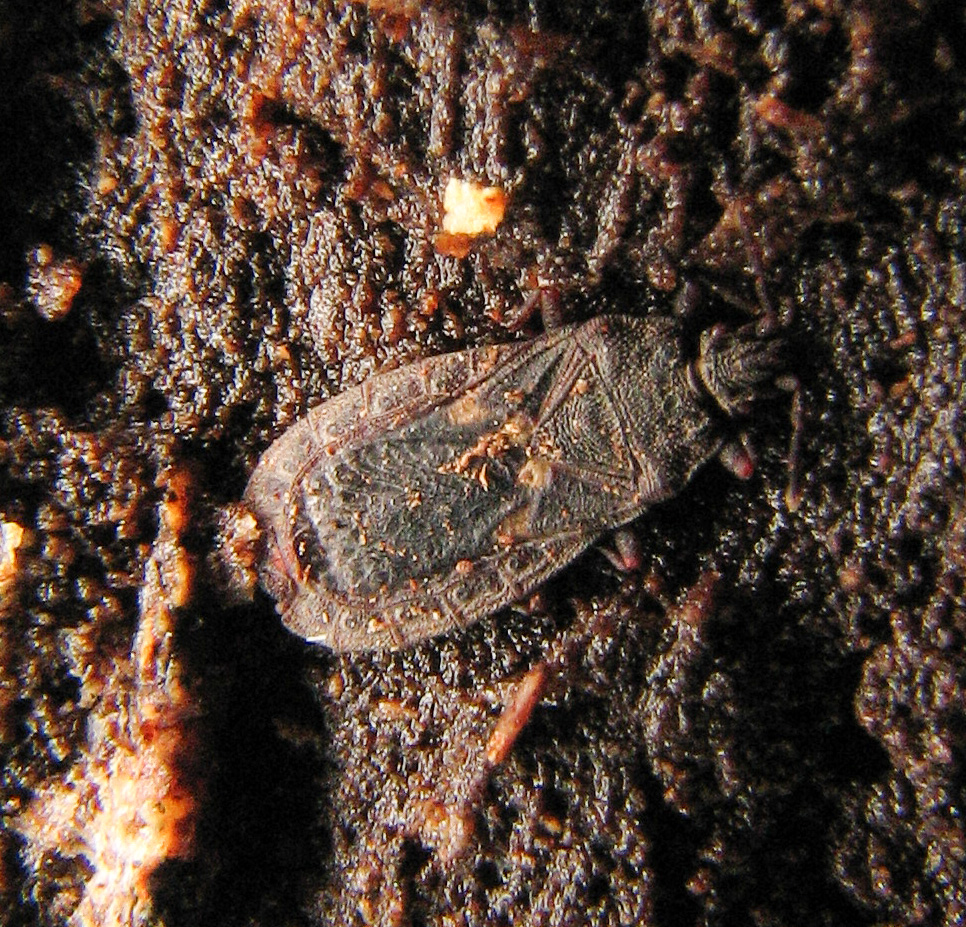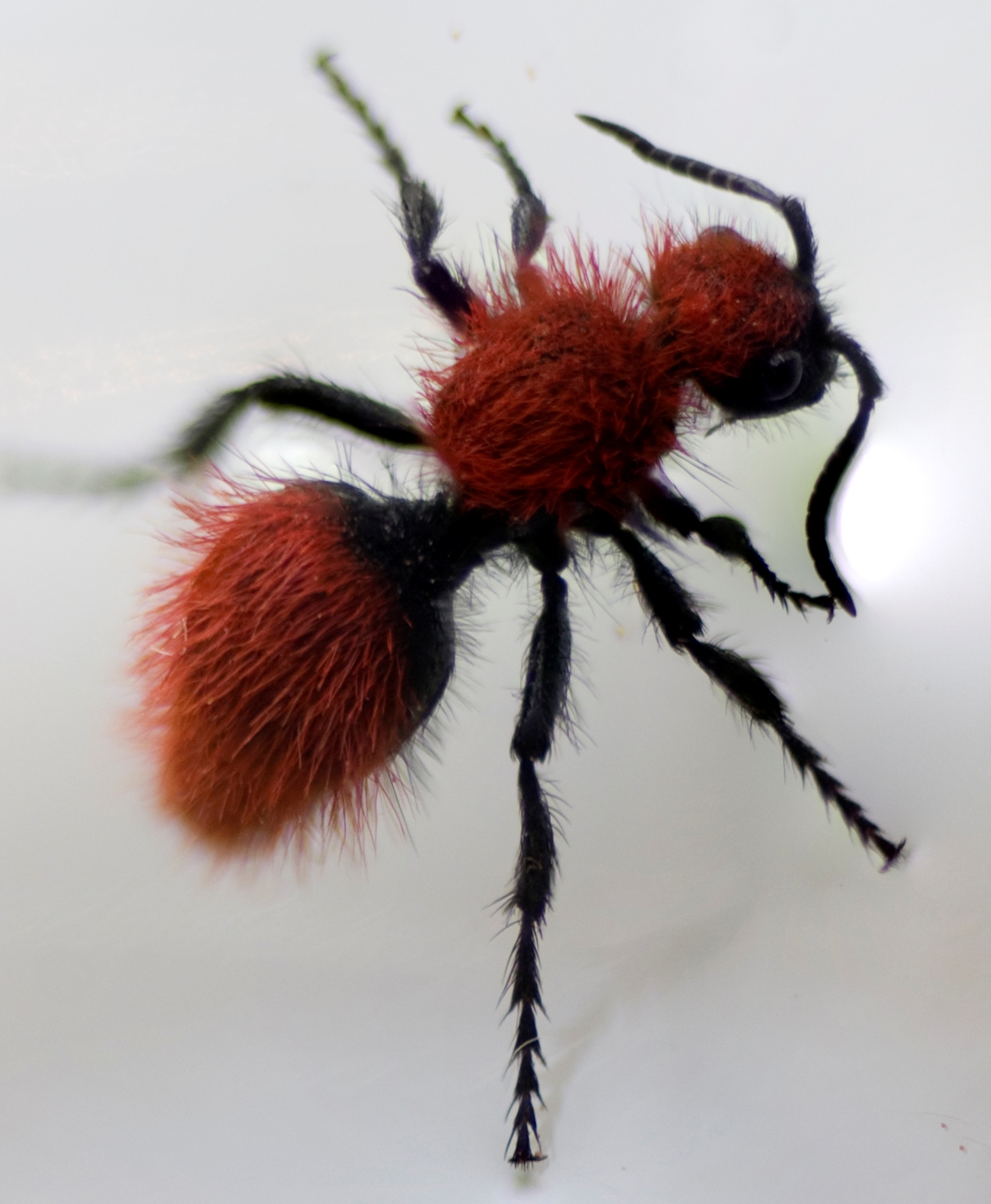|
Aradidae
Aradidae is a family of flat bugs, and a member of true bugs (Heteroptera). The common name for these insects refers to their dorsoventrally flattened bodies. With few exceptions, these cryptic insects are of no economic importance. This family occurs worldwide, with the most diversity occurring in Australia. Temperate species commonly live under the bark of dead trees, while many tropical species are found in leaf litter or on fallen twigs or branches. Most members of the family are thought to be mycophagous (fungus eating), but little is known of the feeding habits of most species. They can be attracted to the pheromones of bark beetles. Many of the tropical taxa are apterous. Flat bugs are distant relatives of the more familiar stink bug Stink bug or stinkbug is a common name for several insects and may refer to: * Any of several bugs in the true bug (hemipteran) family Pentatomidae Pentatomidae is a family of insects belonging to the order Hemiptera, generally c ... [...More Info...] [...Related Items...] OR: [Wikipedia] [Google] [Baidu] |
Aneurinae
Aneurinae is a subfamily of flat bugs in the family Aradidae. There is at least 1 genus, ''Aneurus'', in Aneurinae. References Further reading * * * * * * * * Aradoidea {{pentatomomorpha-stub ... [...More Info...] [...Related Items...] OR: [Wikipedia] [Google] [Baidu] |
Modicarventus
''Modicarventus wisei'' is an endemic species of New Zealand flat bug Aradidae is a family of flat bugs, and a member of true bugs ( Heteroptera). The common name for these insects refers to their dorsoventrally flattened bodies. With few exceptions, these cryptic insects are of no economic importance. This fami ..., described by Kirman in 1989.''NZIB: New Zealand Inventory of Biodiversity''. Gordon D. (ed), 2009-06-12 The specimens were first collected from Unuwhao on the North Cape in February 1967 by K.A.J. Wise, but not described as a new species until 1989. The species are of 2–3 mm in length, with a red-brown colouration. The species appears to be related to ''Neocarventus angulatus'' due to both species sharing similar thorax characteristics. ''Modicarventus wisei'' was named after New Zealand entomologist K.A.J. Wise. References Aradidae Insects described in 1989 Hemiptera of New Zealand Pentatomomorpha genera Monotypic Hemiptera genera {{pe ... [...More Info...] [...Related Items...] OR: [Wikipedia] [Google] [Baidu] |
Aradinae
Aradinae is a subfamily of true bugs in the family Aradidae. There are at least 90 described species in Aradinae. Genus * ''Aradus ''Aradus'' is a genus of true bugs in the family Aradidae, the flat bugs. It is distributed worldwide, mainly in the Holarctic.Larivière, M. C. and A. Larochelle. (2006)An overview of flat bug genera (Hemiptera, Aradidae) from New Zealand, wit ...'' Fabricius, 1803 References * Thomas J. Henry, Richard C. Froeschner. (1988). ''Catalog of the Heteroptera, True Bugs of Canada and the Continental United States''. Brill Academic Publishers. Further reading * Aradoidea {{Pentatomomorpha-stub ... [...More Info...] [...Related Items...] OR: [Wikipedia] [Google] [Baidu] |
Aradoidea
Aradoidea is a superfamily of true bugs. The Piesmatidae, usually placed in the Lygaeoidea The Lygaeoidea are a sizeable Taxonomic rank, superfamily of true bugs, containing seed bugs and allies, in the order Hemiptera. There are about 16 families and more than 4,600 described species in Lygaeoidea, found worldwide. Most feed on seeds ..., might also belong here. (2007): An Unusual, Primitive Piesmatidae (Insecta: Heteroptera) in Cretaceous Amber from Myanmar (Burma). ''American Museum Novitates'' 3611: 1-17. DOI:10.1206/0003-0082(2008)3611 :AUPPIH.0.CO;PDF fulltext References Hemiptera superfamilies {{Pentatomomorpha-stub ... [...More Info...] [...Related Items...] OR: [Wikipedia] [Google] [Baidu] |
Mezirinae
Mezirinae is a subfamily of flat bug. Distributed globally. More than 1120 described species in 124 genera. Genera * '' Ambohitanyela'' Heiss & Banar, 2013 * †'' Aphleboderrhis'' Stål, 1860 * †'' Brevisensoria'' Poinar, 2011 Dominican amber, Miocene * '' Mezira'' Amyot & Serville, 1843 *†'' Myanmezira'' Heiss and Poinar 2012 Burmese amber, Myanmar, Cenomanian The Cenomanian is, in the ICS' geological timescale, the oldest or earliest age of the Late Cretaceous Epoch or the lowest stage of the Upper Cretaceous Series. An age is a unit of geochronology; it is a unit of time; the stage is a unit in the s ... * '' Nannium'' Bergroth, 1898 * '' Neuroctenus'' Fieber, 1860 * '' Notapictinus'' Usinger & Matsuda, 1959 References Bugguide.net. Subfamily Mezirinae Aradoidea {{Heteroptera-stub ... [...More Info...] [...Related Items...] OR: [Wikipedia] [Google] [Baidu] |
Tropics
The tropics are the regions of Earth surrounding the Equator. They are defined in latitude by the Tropic of Cancer in the Northern Hemisphere at N and the Tropic of Capricorn in the Southern Hemisphere at S. The tropics are also referred to as the tropical zone and the torrid zone (see geographical zone). In terms of climate, the tropics receive sunlight that is more direct than the rest of Earth and are generally hotter and wetter as they aren't affected as much by the solar seasons. The word "tropical" sometimes refers to this sort of climate in the zone rather than to the geographical zone itself. The tropical zone includes deserts and snow-capped mountains, which are not tropical in the climatic sense. The tropics are distinguished from the other climatic and biomatic regions of Earth, which are the middle latitudes and the polar regions on either side of the equatorial zone. The tropics constitute 40% of Earth's surface area and contain 36% of Earth's landmass. , the ... [...More Info...] [...Related Items...] OR: [Wikipedia] [Google] [Baidu] |
Heteroptera Families
The Heteroptera are a group of about 40,000 species of insects in the order Hemiptera. They are sometimes called "true bugs", though that name more commonly refers to the Hemiptera as a whole. "Typical bugs" might be used as a more unequivocal alternative, since the heteropterans are most consistently and universally termed "bugs" among the Hemiptera. "Heteroptera" is Greek for "different wings": most species have forewings with both membranous and hardened portions (called hemelytra); members of the primitive sub-group Enicocephalomorpha have completely membranous wings. The name "Heteroptera" is used in two very different ways in modern classifications. In Linnean nomenclature, it commonly appears as a suborder within the order Hemiptera, where it can be paraphyletic or monophyletic depending on its delimitation. In phylogenetic nomenclature, it is used as an unranked clade within the Prosorrhyncha clade, which in turn is in the Hemiptera clade. This results from the realizati ... [...More Info...] [...Related Items...] OR: [Wikipedia] [Google] [Baidu] |
Halyomorpha Halys
The brown marmorated stink bug (''Halyomorpha halys'') is an insect in the family Pentatomidae, native to China, Japan, Korea and other Asian regions. In September 1998 it was collected in Allentown, Pennsylvania, where it is believed to have been accidentally introduced. The nymphs and adults of the brown marmorated stink bug feed on over 100 species of plants, including many agricultural crops, and by 2010–11 had become a season-long pest in orchards in the Eastern United States. In 2010, in the Mid-Atlantic United States, $37 million in apple crops were lost, and some stone fruit growers lost more than 90% of their crops. Since the 2010's the bug has spread to Georgia and Turkey and caused extensive damage to hazelnut production. It is now established in many parts of North America, and has recently become established in Europe and South America. Description Adult brown marmorated stink bugs are approximately long and about as wide, forming the heraldic shield shape chara ... [...More Info...] [...Related Items...] OR: [Wikipedia] [Google] [Baidu] |
Aptery
Aptery is the anatomical condition of an animal completely lacking any kind of wings. An animal with this condition is said to be apterous. Most animal species belong to and are phylogenetic descendants of apterous taxa. These groups are said to be primarily apterous. Insects that are primarily apterous belong to the subclass Apterygota. Apterous is an adjective that means that the insect or organism is wingless and usually refers to a particular form of an insect that may have wings, or a wingless species in a group that typically has wings, e.g. many Orthoptera (grasshoppers and allies) and Hymenoptera (wasps). In some groups, one sex may be apterous while the other is winged, e.g. Mutillidae (velvet ants). In other cases a particular form of an insect (but not all individuals) will be apterous, e.g. some Tetrigidae (pygmy grasshoppers). Wingless animals which belong to or are phylogenetic descendants of winged taxa are said to be secondarily apterous. 5% of extant Pterygota are ... [...More Info...] [...Related Items...] OR: [Wikipedia] [Google] [Baidu] |
Bark Beetle
A bark beetle is the common name for the subfamily of beetles Scolytinae. Previously, this was considered a distinct family (Scolytidae), but is now understood to be a specialized clade of the "true weevil" family (Curculionidae). Although the term "bark beetle" refers to the fact that many species feed in the inner bark (phloem) layer of trees, the subfamily also has many species with other lifestyles, including some that bore into wood, feed in fruit and seeds, or tunnel into herbaceous plants. Well-known species are members of the type genus ''Scolytus'', namely the European elm bark beetle ''S. multistriatus'' and the large elm bark beetle ''S. scolytus'', which like the American elm bark beetle ''Hylurgopinus rufipes'', transmit Dutch elm disease fungi (''Ophiostoma''). The mountain pine beetle ''Dendroctonus ponderosae'', southern pine beetle ''Dendroctonus frontalis'', and their near relatives are major pests of conifer forests in North America. A similarly aggressive spe ... [...More Info...] [...Related Items...] OR: [Wikipedia] [Google] [Baidu] |
Pheromone
A pheromone () is a secreted or excreted chemical factor that triggers a social response in members of the same species. Pheromones are chemicals capable of acting like hormones outside the body of the secreting individual, to affect the behavior of the receiving individuals. There are ''alarm signal, alarm pheromones'', ''food trail pheromones'', ''sex pheromones'', and many others that affect behavior or physiology. Pheromones are used by many organisms, from basic unicellular prokaryotes to complex multicellular eukaryotes. Their use among insects has been particularly well documented. In addition, some vertebrates, plants and ciliates communicate by using pheromones. The ecological functions and evolution of pheromones are a major topic of research in the field of chemical ecology. Background The portmanteau word "pheromone" was coined by Peter Karlson and Martin Lüscher in 1959, based on the Greek φερω ''pheroo'' ('I carry') and ὁρμων ''hormon'' ('stimulating'). P ... [...More Info...] [...Related Items...] OR: [Wikipedia] [Google] [Baidu] |


_US_Distribution.gif)
